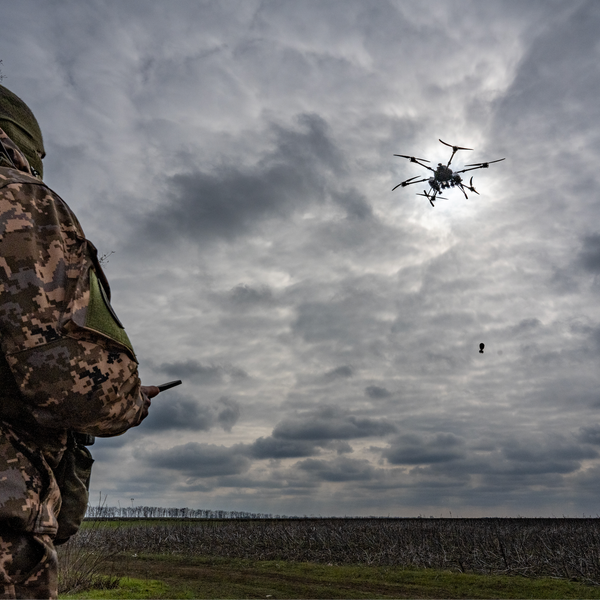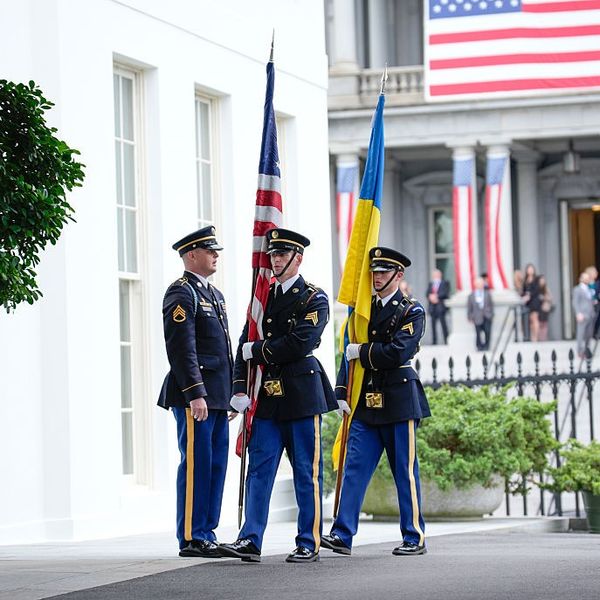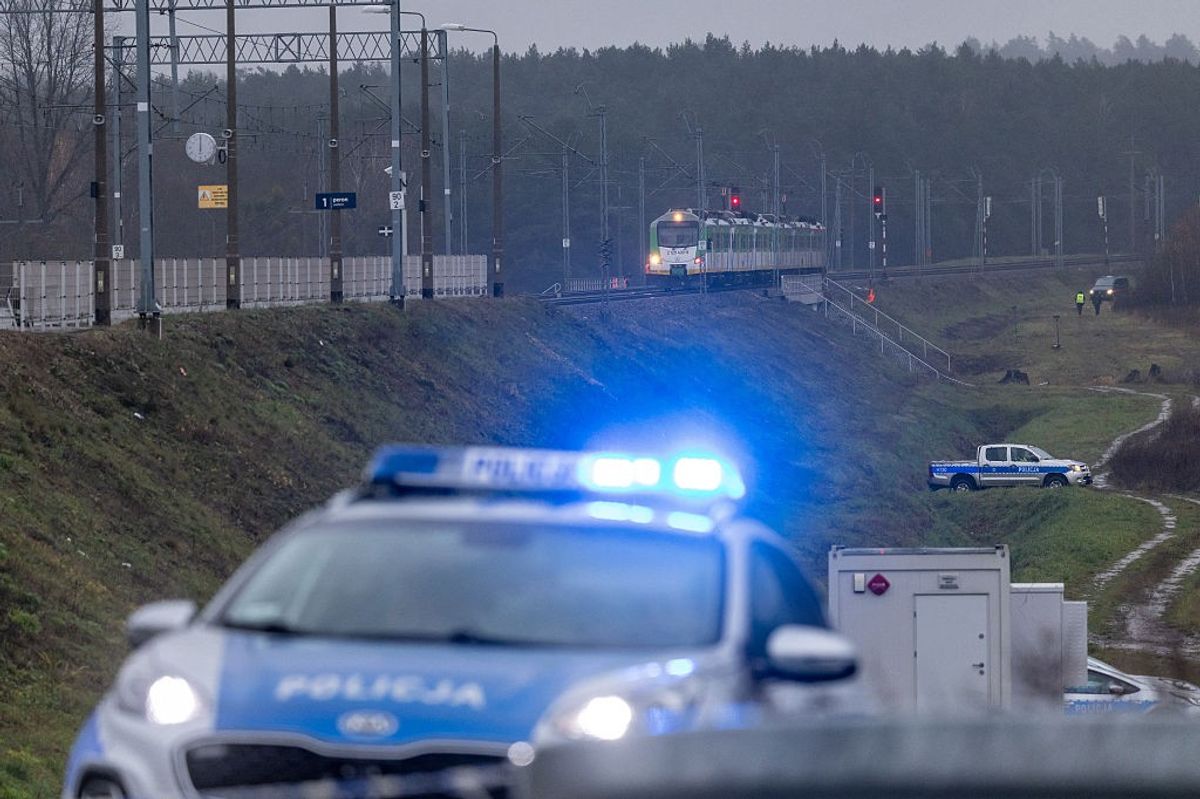OPINION — The war in Ukraine has evolved into a complex geopolitical conflict, shaped not only by military strategy but by global economic dependencies. While Western nations continue to provide financial and military aid, a critical vulnerability has emerged: Ukraine's heavy reliance on Chinese drone components. The Ukrainian drone manufacturers with whom I have spoken admit that their drones are built from as much as 65% Chinese components. This dependence, while tactically necessary, has a paradoxical consequence: Western aid inadvertently strengthens the very supply chains that also benefit Russia, thereby prolonging the conflict.
Ultimately, Ukraine will only win this war by forcing Russia to spend enough that continuing to send soldiers and equipment into Ukraine becomes financially untenable. Because China maintains a strategic position in global technology manufacturing—especially in drone parts—both Ukraine and Russia draw from the same pool of resources, albeit through different channels. This paradox raises urgent questions about the effectiveness of Western aid and the long-term strategy for ending the war.
Rather than continuing to fund Ukraine’s drone purchases, the West should prioritize dismantling Chinese supply chain dominance. Doing so would not only weaken Russia’s access to critical technologies but also strengthen Western industrial capacity and reduce global reliance on China. Economic strategy, not just military support, is key to resolving the war in Ukraine and preparing for future global conflicts.
Ukraine's Dependence on Chinese Drone Components
Since the onset of Russia’s full-scale invasion, drones have become a cornerstone of Ukraine’s defense. During a recent trip to the Ukrainian front lines, a Ukrainian commander explained, “The DJI Mavic is the king of battle. Nothing else is even close.” DJI drones are manufactured in China, and by 2023, Ukraine was reportedly purchasing up to 30% of the company's global Mavic production.
This dependence, however, has become a strategic liability. In 2024 and 2025, China imposed export restrictions on drone components to Ukraine, including flight controllers, motors, and navigation cameras. Through this reliance, Ukraine is handing China control over its ability to sustain the war. These restrictions have severely disrupted Ukraine’s drone supply chain, leading to shortages on the front lines and forcing military units to seek alternatives.
This dynamic reveals a troubling reality: the same Chinese components Ukraine depends on have been found in Russian drones, including the Iranian-designed Shahed loitering munitions used to attack Ukrainian cities.
China’s Dual Role: Restricting Ukraine, Empowering Russia
China’s role in the Ukraine conflict is marked by strategic ambiguity—publicly claiming neutrality while quietly enabling Russia’s war effort. This posture has had profound consequences for both sides of the battlefield. On one hand, China has imposed export restrictions on drone components to Ukraine, severely limiting its ability to produce drones for frontline operations. On the other hand, China continues to supply Russia with dual-use technologies, such as semiconductors, drone engines, and optical sensors, which are critical to sustaining Moscow’s drone production. And finally, buying Chinese components strengthens China’s economy, which enables them to support disruptive regimes, namely Russia.
Evidence of China’s support for Russia is mounting. In July 2025, Ukraine imposed sanctions on five Chinese companies after recovering Chinese-made parts from downed Russian Shahed drones which were used in attacks on Kyiv. These firms—ranging from precision munitions manufacturers to logistics providers—were supplying components that bypass Western sanctions. This selective restriction strategy benefits Russia disproportionately.
Despite efforts to scale domestic production, Ukraine’s drone industry remains constrained by limited access to critical components and manufacturing capacity, making purchases from China a necessity. The result is a battlefield dynamic in which Ukraine’s technological edge is increasingly undermined by its dependence on a supply chain controlled by a country that is, at best, strategically ambiguous, and at worst, actively enabling Russia’s war effort.
Sign up for the Cyber Initiatives Group Sunday newsletter, delivering expert-level insights on the cyber and tech stories of the day – directly to your inbox. Sign up for the CIG newsletter today.
Western Funding and Its Unintended Consequences
While Western nations have poured billions into Ukraine’s drone industry with the intent of giving them a battlefield advantage, a significant portion of Ukraine’s drone production still depends on Chinese components. This creates a troubling paradox: Western funding intended to help Ukraine may be indirectly sustaining Chinese supply chains that benefit Russia. The problem is not just tactical—it’s structural. Western aid has focused on scaling production rather than rebuilding supply chains.
Many Ukrainian drone factories that claim domestic production are actually only assembling imported Chinese components. And it’s not their fault; there are no viable alternatives to the Chinese components needed to manufacture advanced drones. This dependency undermines the strategic value of Western investment and risks prolonging the war by keeping both sides tethered to the same global supply network.
Strategic Shift: Replace Chinese Supply Chains
To truly support Ukraine—and to prepare for future geopolitical challenges—Western nations must rethink their approach. Funding should be redirected from drone purchases to building resilient, non-Chinese supply chains. This means investing in domestic and allied manufacturing of critical components, supporting Ukrainian innovation through transfer of components, and creating joint production hubs in Europe and North America which sell to Ukraine at subsidized prices. Doing so will have the secondary benefit of establishing manufacturing capacity and expertise in Europe and North America, while simultaneously reducing cash flow to China. Only by severing the link to Chinese supply chains can the West ensure that its aid is not inadvertently resourcing its adversaries.
Momentum is building for this change. In 2025, the U.S. government launched a series of legislative reforms, including the “Unleashing American Drone Dominance” Executive Order, which mandates prioritization of U.S.-made drones for federal agencies. This was followed by the DoD Procurement Directive and the FY2025 National Defense Authorization Act, which expanded budgets and imposed new barriers on foreign drones. These moves have catalyzed a surge in investment, and there seems to be greater emphasis on the horizon.
Europe is also pivoting. The Atlantic Council’s strategy brief outlines a comprehensive “protect-promote-align” framework to secure supply chains. This includes banning Chinese drones in sensitive sectors, promoting domestic manufacturing, and aligning policies across NATO, the EU, and the G7. The goal is clear: build a resilient, secure, and democratic drone ecosystem that can withstand geopolitical shocks and support allied defense needs.
Replacing Chinese supply chains will not only shorten the war in Ukraine by cutting off Russia’s access to critical technologies—it will also strengthen Western readiness for future conflicts. It will create jobs, foster innovation, and restore strategic autonomy.
The war in Ukraine is not only a test of military resilience but a reflection of global economic interdependence. Ukraine’s reliance on Chinese drone components has created a strategic paradox—one in which Western aid may be inadvertently sustaining the very supply chains that empower Russia. China’s dual role, restricting Ukraine while enabling Russia, underscores the urgency of rethinking how support is structured. Continued funding for drone purchases, without addressing the underlying supply chain vulnerabilities, risks prolonging the conflict and weakening the West’s strategic position.
To truly help Ukraine win, the West must shift its focus from short-term battlefield solutions to long-term economic strategy. Replacing Chinese supply chains is not just about drones—it’s about restoring industrial sovereignty, reducing dependence on authoritarian regimes, and preparing for future conflicts. By investing in domestic and allied manufacturing, the West can build a resilient defense ecosystem that serves both immediate and future security needs. Victory in Ukraine will not come solely through firepower—it will come through economic strength, strategic foresight, and the courage to reshape the systems that underpin modern warfare. The time to act is now.
The Cipher Brief is committed to publishing a range of perspectives on national security issues submitted by deeply experienced national security professionals.
Opinions expressed are those of the author and do not represent the views or opinions of The Cipher Brief.
Have a perspective to share based on your experience in the national security field? Send it to Editor@thecipherbrief.com for publication consideration.
Read more expert-driven national security insights, perspective and analysis in The Cipher Brief












